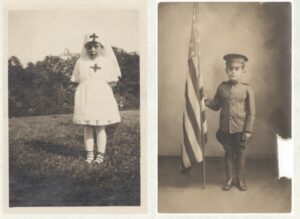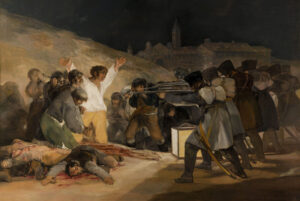Given the intrinsic pioneering glamour that the airplane had before World War I, it is hardly surprising that the first air war’s most successful fighter pilots, or aces, became legendary figures even during the conflict. Inevitably, much of what they achieved was exaggerated, even though combat records were usually kept of what they actually did–and, more often than not, their actual deeds stood up well enough on their own merits.
The past few decades have seen a number of biographies appear on World War I aces that have genuinely improved on the older ones, which owed more to the pulp magazines of the 1930s than to serious scholarship. A useful starting point for biographers of such airmen has been the series of books published by Grub Street in London, presenting the official scores of British fighter pilots in Above the Trenches, by Christopher Shores, Norman Franks and Russell Guest; those of the French and American aces in Over the Front, by Franks and Frank W. Bailey; and those of the Germans in Above the Lines, by Franks, Bailey and Guest. In an apparent effort to fill the remaining holes in research on World War I aces, Grub Street has published a fourth and final volume in that series: Above the War Fronts: A Complete Record of the British Two-Seater Bomber Pilot and Observer Aces, The British Two-Seater Fighter Observer Aces, and the Belgian, Italian, Austro-Hungarian and Russian Fighter Aces 19141918, by Norman Franks, Russell Guest and Gregory Alegi (Grub Street, London, distributed by Seven Hills Book Distributors, Cincinnati, Ohio, 1997, $47.95).
British bomber and observation pilots who were credited with five or more victories were documented in Above the Trenches, but during World War I it was customary to award full credit to the observer and gunner as well as to the pilot, so it is perhaps fitting that the often unsung “fellow in back” get his due in Above the War Fronts. Some, of course, attained a share of fame when their victims happened to be noteworthy aces from the other side. Lieutenant Albert Edward Woodbridge of No. 20 Squadron was the gunner in Captain D.C. Cunnell’s FE.2d on July 6, 1917, when he was credited with sending four attacking Albatros D.Vs “down out of control.” Typically, the duo’s claims were exaggerated, but one of the Germans he shot down did force-land, suffering a head wound that put him out of the war for weeks–he happened to be Rittmeister Manfred Freiherr von Richthofen, the already notorious Red Baron.
World War I scholars who might be jaded with the familiar actions over the Western Front may find their curiosity piqued anew by Alegi’s contribution of Italian heroes, as well as the book’s entries on Belgian, Russian and Austro-Hungarian airmen. Although meant to complete a series, Above the War Fronts’ coverage of forgotten air arms and their most notable airmen makes it of special interest in itself.
Basic research resources like Grub Street’s series on World War I aces provide a useful skeleton that biographers of the aces can flesh out with more personal information. A recent Grub Street book does so in larger scale and greater detail. In his first book, Barker VC: The Life, Death and Legend of Canada’s Most Decorated War Hero (Grub Street, London, distributed by Seven Hills Book Distributors, Cincinnati, Ohio, 1997, $34.95), Canadian author Wayne Ralph makes full use of the well-documented official record of his subject, as well as a multitude of published and private sources and the recollections of four personal acquaintances–World War I aces Thomas F. Williams and Gerald A. Birks, and Canadian Air Vice Marshals Thomas A. Lawrence and Kenneth M. Guthrie. The result is a human portrait rather than what the author would call a “cartoon image of a warrior.”
A brilliant pilot, victor over 50 enemy aircraft and recipient of the Victoria Cross, Distinguished Service Order and Bar, Military Cross and two Bars, Croix de Guerre and two Medaglie d’Argento, William G. “Will” Barker was also the brother-in-law of another famed Canadian ace, Billy Bishop. The wounds Barker sustained in his final combat on October 27, 1918–for which he was awarded his VC–proved more serious than anyone realized at the time, leading to a postwar period of failure, depression and alcoholism. Just as Barker’s fortunes began to improve, he was tragically killed when the Fairchild KR-21 he was test-flying crashed on March 12, 1930.
Stripped of myth, Will Barker remains an outstanding aviation figure, and his memory is done full justice in Ralph’s book. As the author himself notes, “If it is true, as one Canadian philosopher has noted, that Canadians seem to like their heroes smaller than life, then Barker is sadly irrelevant.”
A more extensive record of heroes is contained in another recent addition to the World War I aviation buff’s library, The Red Baron’s Combat Wing: Jagdgeschwader Richthofen, by Peter Kilduff (Arms and Armour Press, distributed by Sterling Publishing Co., Inc., New York, 1997, $29.95). Although not the best of pilots, Manfred von Richthofen was a cunning aerial tactician and an outstanding leader. Consequently, his status as World War I’s ace of aces made less of an impression on his British opponents than the collective notoriety of Jagdgeschwader I, his four-squadron fighter wing better known as the “Flying Circus.”
Personally chosen for their proven abilities or their potential, the Baron’s “gentlemen” included numerous recipients of Germany’s highest honor, the Ordre Pour le Mérite. Among the many renowned members of the wing were Ernst Udet; Erich Löwenhardt; Werner Voss; the Baron’s brother Lothar von Richthofen, who scored 40 victories of his own; and the unit’s last commander, an already controversial Hermann Göring.
A longtime scholar of World War I aviation with a book on Richthofen already to his credit, Kilduff has done his research on both sides of the lines to provide readers the most detailed treatment yet on the Flying Circus and its stars.
By Jon Guttman




